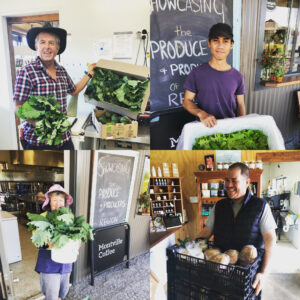An emerging theme that we have noticed when dealing with farmers on their regenerative journey is how the process regenerates them too.
I’ve thought long and hard about this, wondering what it is that is so restorative about aligning with nature rather than working in spite of her. The answer is obvious in some ways. We are as much a part of nature as cattle, the lettuces, the trees, the insects and the dirt. We are here because of evolution over millennia, with plants and animals and landscapes evolving together in a complex balance. We have evolved to be part of this balance that connects us with all living things.
Modern/industrial agriculture is one of many ways that removes that connection because it is driven by input supplies where the humans in the system control everything, providing all the requirements for production. If anything, natural processes are an annoyance in an industrial system. While these systems promote yield and efficiency through specialization, the flaw is apparent. When you remove the humans and the inputs, the system fails. It has to, because there is nothing left to support it. 
A regenerative approach is about reducing inputs over time as natural processes reinstate. It’s about systems where ecology and production exist harmoniously and, if the human leaves, the system is resilient and can continue because it is in constant state of regeneration. As we rediscover our connection with our landscapes I think it is the natural next step to look for that connection with others, especially those on similar journeys. And, humans connecting with each other in their landscapes is the foundation of community. Community and connection are what we are biologically programmed for, our need for it is deep and intrinsic so that the sense of belonging that stems from connection is deeply restorative of our wellbeing. Without connection, all sorts of social problems begin to emerge. Without connection we eat unconsciously, we exist but we do not thrive.
By building resilience in our landscapes as we remove externally sourced synthetic inputs, we build resilience in ourselves as we think outside the square when issues and problems arise. We get better at understanding natural landscape functions and how we can enhance rather than thwart those functions. We look to each other rather than corporations for support and inspiration. The process of regeneration of a landscape paves the way for the regeneration of us as people and for our communities.
By Amber Scott
